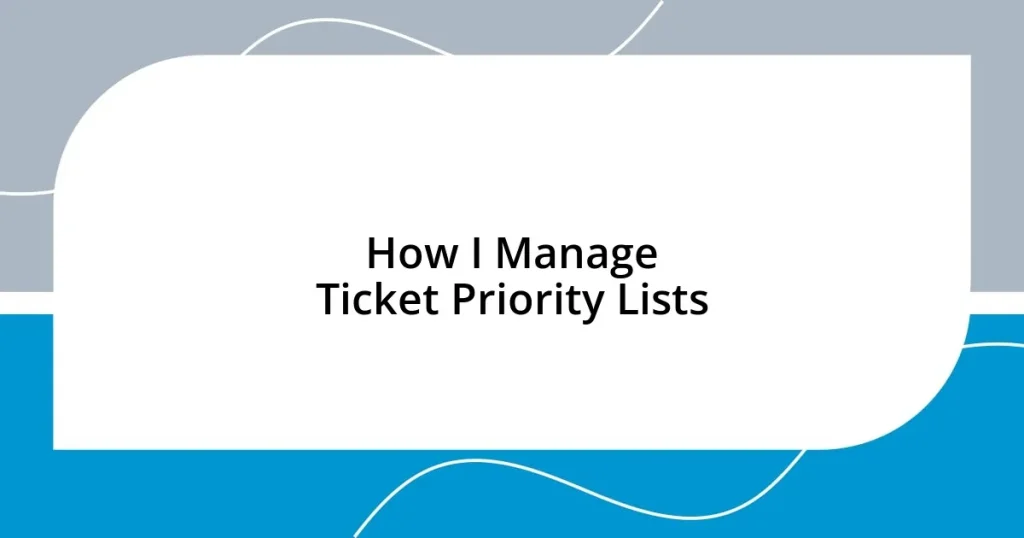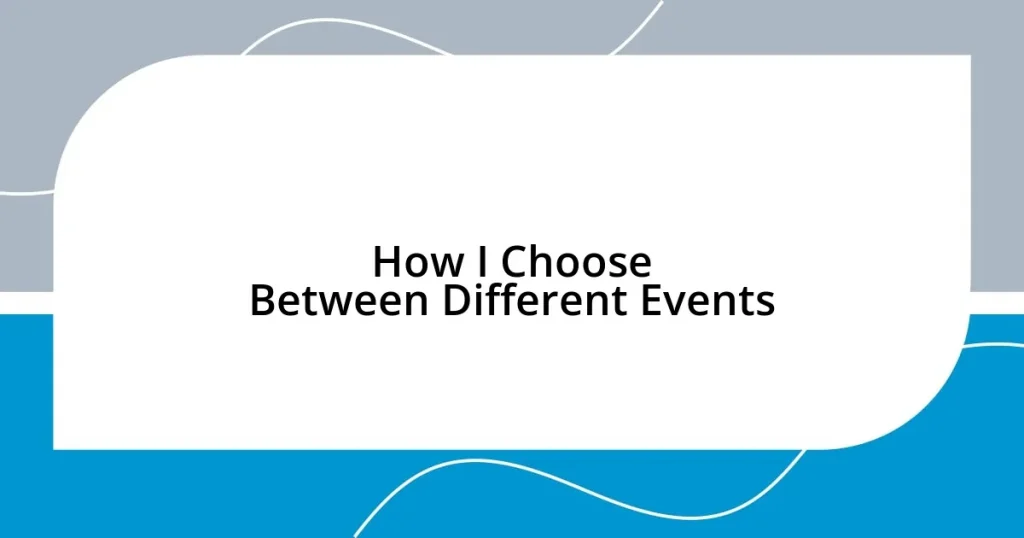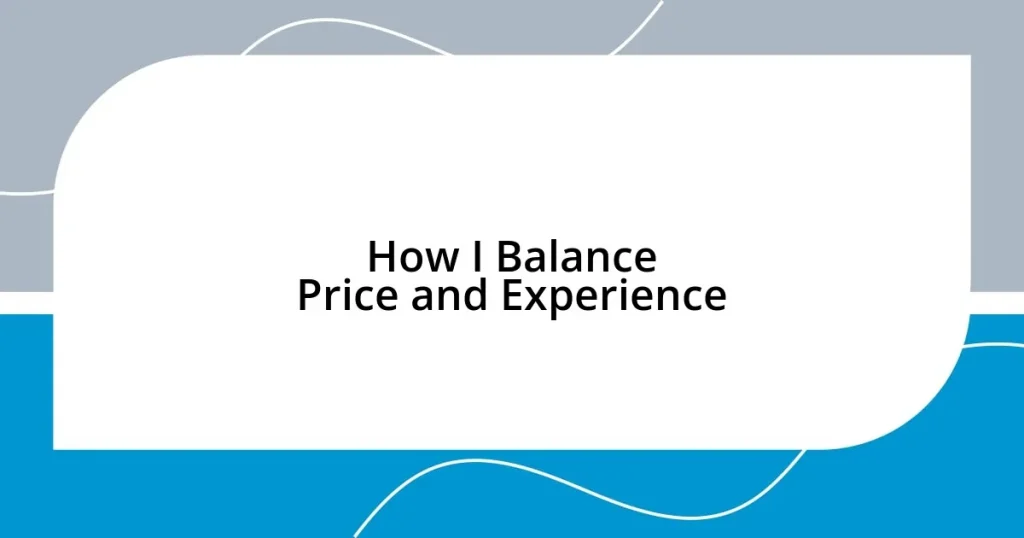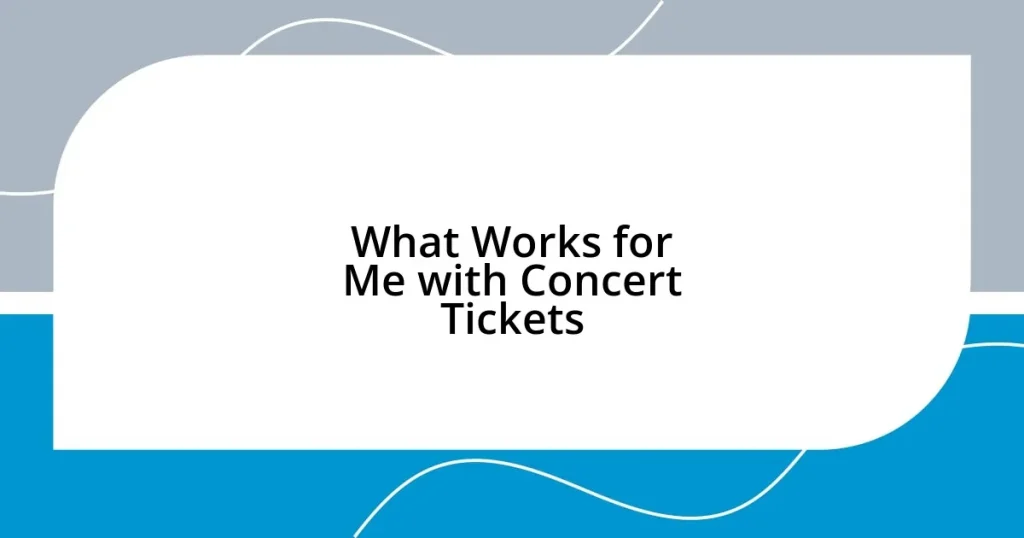Key takeaways:
- Understanding ticket priority levels is crucial for improving team efficiency and communication, directly impacting customer satisfaction.
- Establishing clear criteria for prioritization, such as issue severity and customer impact, enhances response times and team morale.
- Utilizing a ticket management system provides visibility and streamlines prioritization, reducing bottlenecks in the workflow.
- Regular reviews and open communication with stakeholders foster collaboration and adaptability, ensuring alignment with evolving priorities.
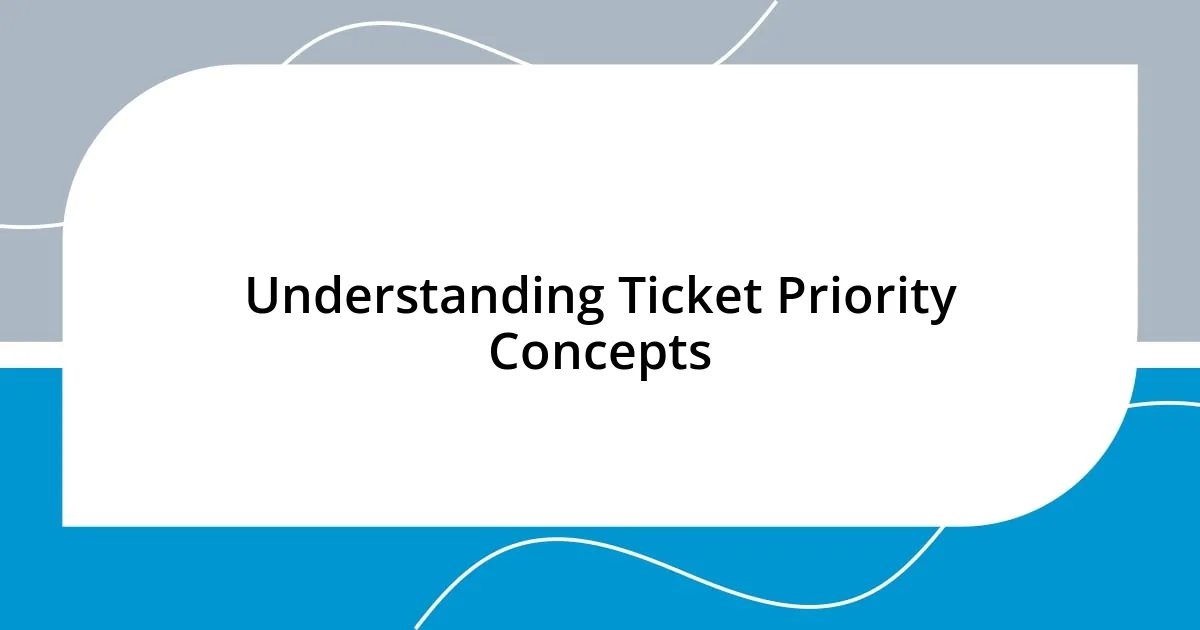
Understanding Ticket Priority Concepts
One of the first things I learned when diving into ticket management is that understanding priority levels can drastically influence how efficiently your team operates. For instance, I remember a time when a critical issue was labeled as low priority, which led to it being sidelined for days. That taught me the hard way that the labels we assign can shape the reality of our workflow, sometimes with unexpected consequences.
As I delved deeper into ticket prioritization, I began to see it not just as a system, but as a communication tool. Have you ever felt the frustration of a customer waiting for their issue to be resolved, while you’re unsure of its urgency? Assigning a clear priority helps streamline that communication, ensuring everyone is aligned. It’s fascinating how a simple prioritization can transform the interaction between teams and customers.
The emotional aspect of prioritizing tickets can’t be understated; when I handle urgent tickets, I feel a sense of responsibility to resolve them quickly. There’s something profound about helping someone in need—it’s like being a modern-day firefighter, extinguishing flames of frustration. This blend of urgency and empathy shapes how I approach ticket prioritization, making it more than just a task but a vital part of delivering exceptional service.
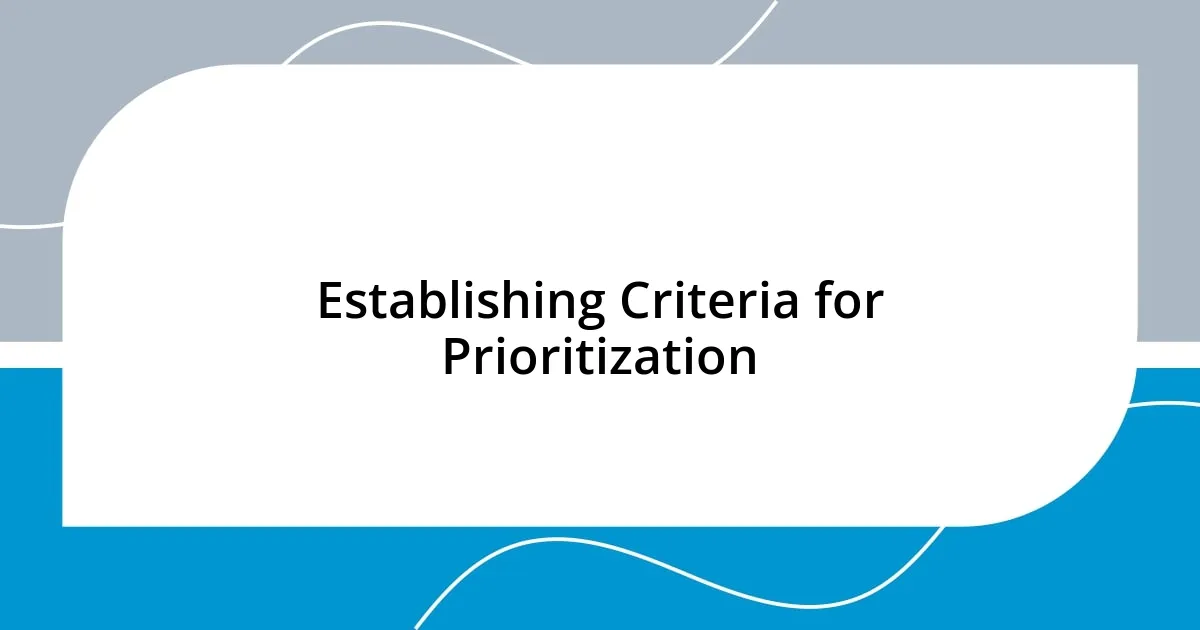
Establishing Criteria for Prioritization
Establishing criteria for prioritization is essential for effective ticket management. In my experience, I’ve found that creating a structured framework helps me and my team assess the urgency and impact of incoming tickets. For example, I’ve seen how categorizing tickets based on technical complexity or customer impact can lead to faster resolutions.
Here are some key factors I consider when prioritizing tickets:
- Severity of the Issue: How critical is the problem? Does it affect many users or just one?
- Customer Impact: Is this a high-value client experiencing the issue, or is it a smaller account?
- Compliance and Risks: Are there compliance implications or risks that we need to address immediately?
- Time Sensitivity: How quickly does this need resolution? Is there a deadline involved?
- Resources Required: What kind of resources will it take to resolve this issue? Is a specialized skill set needed?
By clearly defining these criteria, I’ve noticed a significant improvement in our response times and overall team morale. Seeing the team rally around critical issues with a shared understanding of prioritization is a gratifying experience—it fosters a sense of camaraderie and purpose that propels us forward.
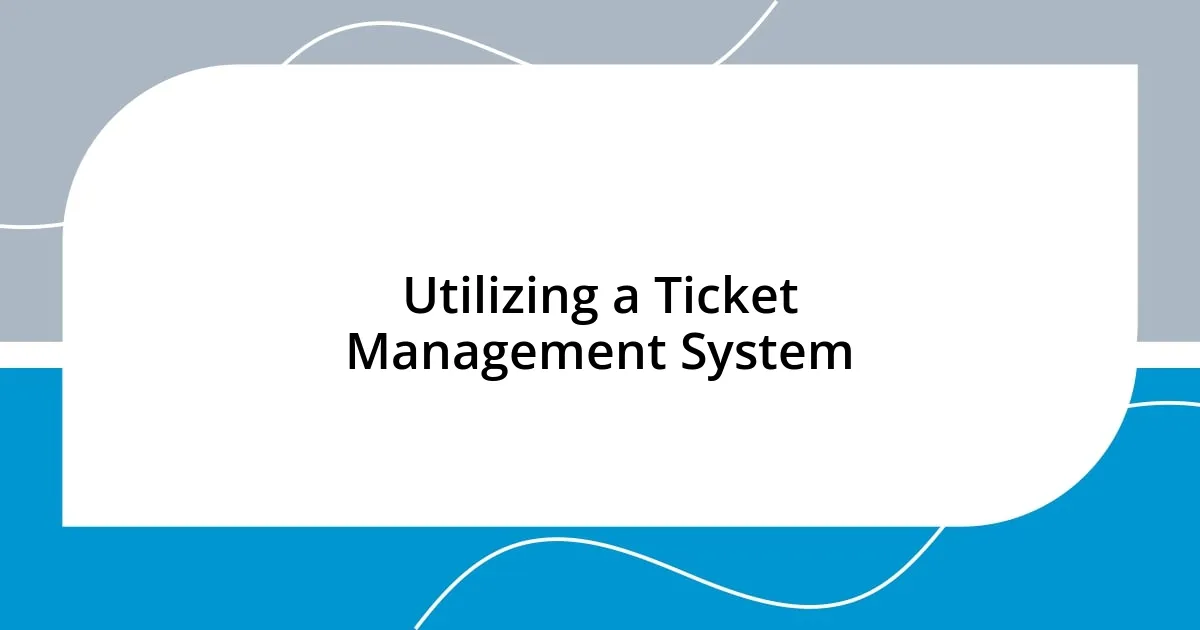
Utilizing a Ticket Management System
Utilizing a Ticket Management System can greatly streamline the way we approach prioritization. I recall implementing a ticket management system in my previous role. It felt like flipping a switch; suddenly, we had a clear overview of all incoming requests. I could see which tickets were piling up and which needed immediate attention. This visibility helped me avoid bottlenecks and allocate resources more effectively, ensuring nothing slipped through the cracks.
The beauty of a good ticket management system lies in its ability to categorize and prioritize issues based on urgency and impact. I remember a critical incident where a major outage occurred. Thanks to the system, we were able to flag it with the highest priority. Everyone jumped in, and we resolved it much faster than we would have without that structure. It’s reassuring to have a tool that not only keeps everything organized but also fosters a sense of urgency and accountability among the team.
To illustrate different systems, here’s a comparison table to help you understand their features better:
| Feature | Basic System | Advanced System |
|---|---|---|
| Real-time Updates | No | Yes |
| Prioritization Tools | Limited | Comprehensive |
| Analytics & Reporting | No | Yes |
| User-friendly Interface | Basic | Intuitive |
| Collaboration Options | Minimal | Highly Collaborative |
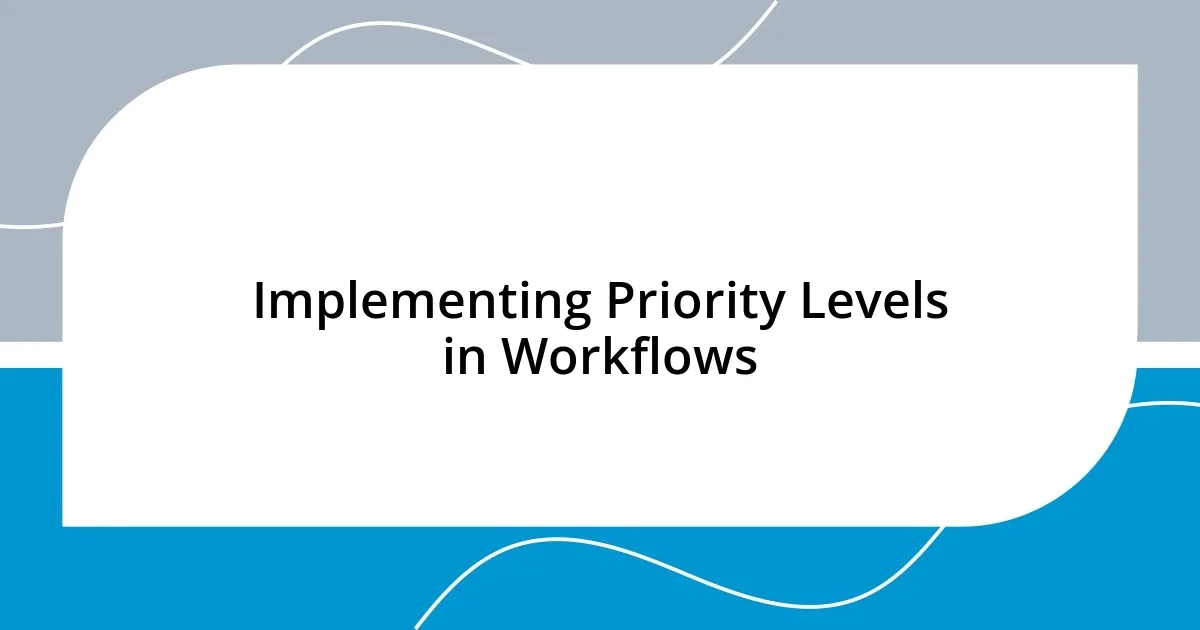
Implementing Priority Levels in Workflows
Implementing priority levels in workflows is more than just a checkbox exercise; it’s about creating a responsive environment that can handle the complexities of our tasks. When I first introduced priority levels to my team, it felt like we were finally speaking the same language. Each ticket was assigned a clear priority, allowing us to focus our energies where they mattered most. Have you ever seen the relief on a teammate’s face when they realize they can tackle a high-priority issue without distractions? It’s quite a motivating sight.
In practical terms, I’ve found that using a color-coded system works wonders. For instance, green for low priority, yellow for medium, and red for high helps everyone quickly gauge what needs to be addressed. One time, after adopting this method, we had a flood of tickets due to a product glitch. The team instinctively gravitated toward the red tickets, and thanks to our clear prioritization, we managed to resolve the critical issues within hours. This experience reinforced my belief that visual cues can simplify decision-making and enhance collaboration.
Moreover, I always emphasize the importance of regular reviews of our priority levels. I usually gather my team weekly to discuss what worked and what didn’t. Does everyone feel the current priorities align with our overall goals? Opening up this dialogue not only shifts our focus, but it also cultivates a culture of continuous improvement. I’ve seen how these discussions spark innovative solutions and strengthen our teamwork. The energy in the room can be infectious, ultimately driving us to refine our workflows even further.
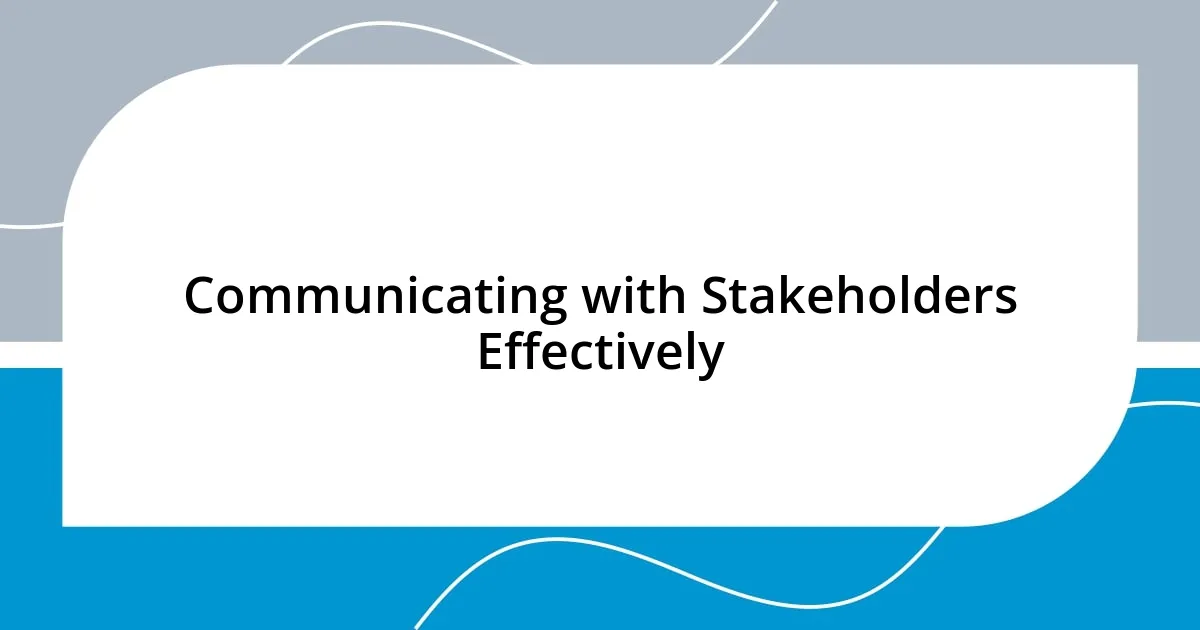
Communicating with Stakeholders Effectively
Keeping stakeholders informed is crucial in managing ticket priority lists. I remember facing a challenging week when a critical client expressed frustration over delayed responses. Understanding their concerns, I took the initiative to reach out personally. It transformed our relationship; open communication alleviated anxiety on both sides and helped me prioritize their tickets more effectively.
When dealing with multiple stakeholders, I’ve learned that clarity is key. I used to send out lengthy email updates, but found that a simple summary with clear action items worked much better. Not only did it save time, but it also sparked more engaging conversations. Have you ever experienced the difference between a daunting email and a quick, digestible message? It’s night and day; the latter encourages prompt feedback and fosters collaboration.
Regular check-ins also play a pivotal role in my approach. For instance, I schedule bi-weekly calls with my main stakeholders, a practice that’s proved invaluable. It’s a great opportunity to discuss priorities and ensure we’re all aligned. I recall one such meeting when a stakeholder shared their insights on a ticket I had initially deprioritized. Their perspective shifted my approach, illustrating just how essential it is to listen and adapt. After all, keeping the conversation going not only builds trust but also ensures that everyone feels valued and heard.
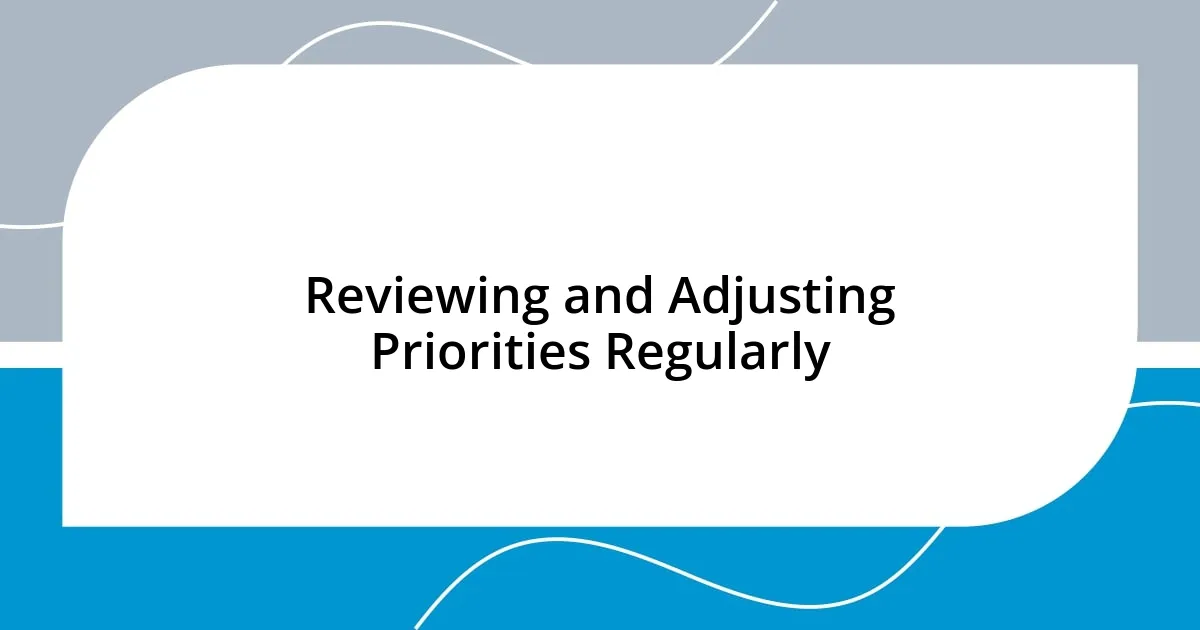
Reviewing and Adjusting Priorities Regularly
Maintaining a flexible mindset is key when it comes to reviewing and adjusting priorities. I remember an instance when a sudden industry shift led to unexpected high-priority requests that caught us off guard. Instead of sticking rigidly to our initial priorities, we convened quickly as a team to reassess our list and reallocate resources. It was eye-opening to see how swiftly we could adapt, and the sense of teamwork was truly invigorating. Have you ever been in a situation where you had to pivot on a moment’s notice? It can be stressful, but it certainly promotes growth and resilience.
I’ve found that implementing a regular review schedule—say, every two weeks—creates a rhythm that helps us stay on track and aligned with evolving objectives. During these sessions, everyone has the chance to voice their concerns and suggest changes based on their latest experiences. There’s something empowering about collaborative decision-making; I once saw a junior team member propose a shift in priorities that I initially dismissed, only to realize later how insightful their perspective was. Engaging all voices not only strengthens our strategy but fosters a culture of inclusivity and innovation.
Lastly, I often encourage my team to reflect on our achievements and challenges during these reviews. It’s fascinating how looking back on our successes can reshape our approaches going forward. One time, after a particularly chaotic month, we spent time acknowledging our wins—big and small. Not only did this boost morale, but it also illuminated the areas that needed recalibration in our prioritization. How often do you find time to celebrate your progress amidst the hustle? Acknowledging milestones revitalizes our focus, ensuring that we’re continually improving and learning from our journey.
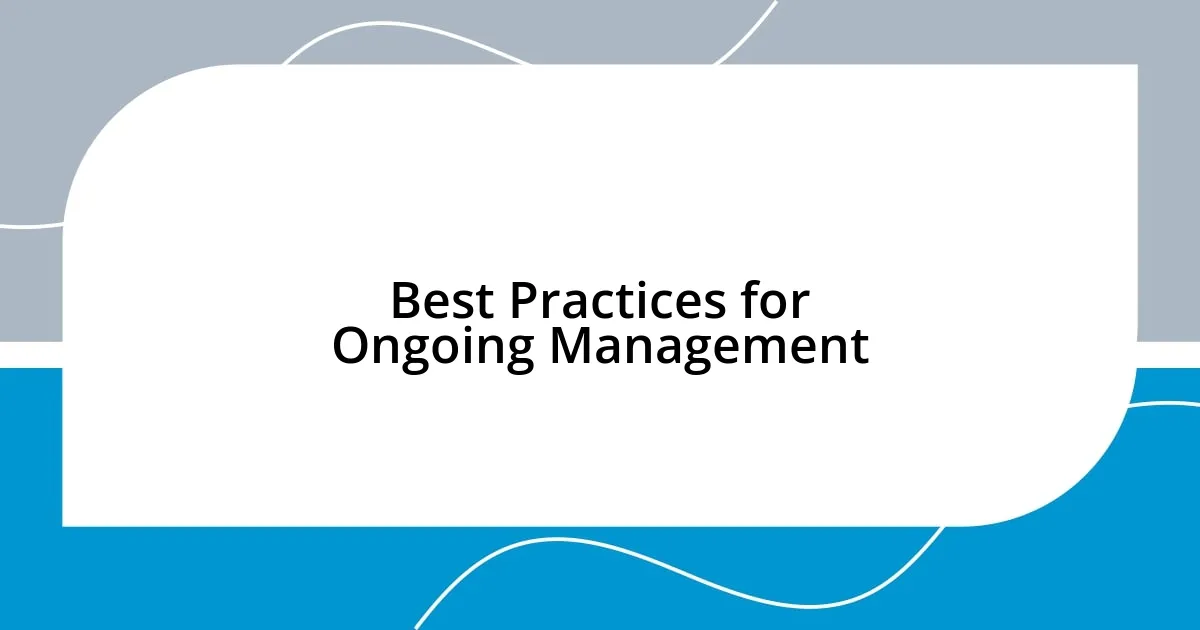
Best Practices for Ongoing Management
Managing ticket priority lists effectively involves integrating consistent practices that keep the workflow smooth and engaging. I’ve adopted the practice of utilizing a shared digital dashboard for real-time updates. It’s amazing how visualizing our workload helps everyone stay informed. During one hectic week, I noticed my team’s stress levels rising. By using the dashboard, we could clearly see what needed immediate attention, which alleviated a lot of pressure. Have you ever found that simply having clarity cuts down on chaos? It truly makes a difference.
I also prioritize fostering a culture of open feedback within my team. When was the last time you had a discussion that led to a breakthrough idea? I remember a brainstorming session where a team member suggested revisiting our ticket assignment criteria. Their insight led us to create a point system that’s now standard practice, helping us assign priority levels methodically. This change not only improved our overall response time but also encouraged everyone to contribute ideas. After all, I believe that the best solutions often come from a diverse pool of perspectives.
Finally, I can’t stress enough the importance of emotional intelligence in ongoing management. It’s essential to be aware of the team’s morale while managing priorities. I once felt a palpable tension during a particularly demanding project, and I took it upon myself to organize a casual team lunch. It turned into an unexpected bonding experience that revitalized our spirits and sparked innovative ideas on ticket handling. Have you ever noticed how a simple break can transform the energy in a room? By nurturing a supportive atmosphere, I’ve seen my team thrive, which undoubtedly translates to better priority management overall.











